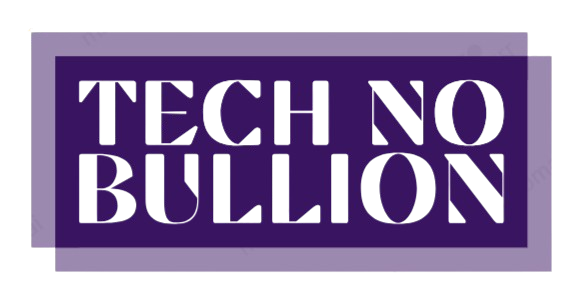On Wednesday, Mistral unveiled its latest flagship AI model, Mistral Large 2, which it claims rivals the cutting-edge models from OpenAI and Meta in terms of code generation, mathematics, and reasoning.
The release of Mistral Large 2 follows just one day after Meta introduced its latest open-source model, Llama 3.1 405B. Mistral asserts that Large 2 elevates performance and cost-effectiveness for open models, supported by impressive benchmarks.
What Makes Mistral Large 2 Stand Out?
Mistral Large 2 surpasses Llama 3.1 405B in code generation and math performance while utilizing less than a third of the parameters. It boasts 123 billion parameters, showcasing its efficiency.
In a press release, Mistral emphasized their focus on minimizing hallucination issues during training. The model is designed to be more discerning in its responses, acknowledging when it lacks knowledge instead of generating plausible but incorrect information.
What Are the Financial and Market Implications for Mistral?
Mistral, a Paris-based AI startup, recently secured $640 million in a Series B funding round led by General Catalyst, achieving a $6 billion valuation. Despite being a newer player in the AI field, Mistral is rapidly advancing with AI models that are on the cutting edge.
However, Mistral’s models, like many others, are not entirely open-source. Commercial applications of the model require a paid license. Implementing such a large model is also a challenge due to the expertise and infrastructure needed, particularly for models with as many parameters as Llama’s 405 billion.
How Does Mistral Large 2 Compare in Terms of Multimodal Capabilities?
One notable absence in Mistral Large 2, as well as Meta’s Llama 3.1 release, is multimodal capabilities. OpenAI leads the competition in multimodal AI systems, which can process images and text simultaneously. This feature is becoming increasingly sought after by startups.
Mistral Large 2 has a 128,000-token window, allowing it to process a substantial amount of data in a single prompt. This token window is equivalent to a 300-page book. The model also offers enhanced multilingual support, understanding languages including English, French, German, Spanish, Italian, Portuguese, Arabic, Hindi, Russian, Chinese, Japanese, and Korean, as well as 80 coding languages. Mistral claims Large 2 produces more concise responses than leading AI models, which often tend to be verbose.
Where Can You Access Mistral Large 2?
Mistral Large 2 is available on multiple platforms, including Google Vertex AI, Amazon Bedrock, Azure AI Studio, and IBM watsonx.ai. It is also accessible on Mistral’s platform, le Plateforme, under the name “mistral-large-2407.” Users can test the model for free on Mistral’s ChatGPT competitor, le Chat.
How Does Mistral’s Approach Differ from Competitors?
Mistral’s approach to minimizing hallucinations sets it apart. Their focus on accuracy and conciseness addresses common issues with current AI models. The company’s dedication to improving performance while reducing parameter count highlights its efficiency.
In contrast, Meta’s Llama 3.1 emphasizes sheer size and capability, pushing the boundaries of what open-source models can achieve. OpenAI’s focus on multimodal capabilities showcases the versatility of its models.
What Are the Potential Applications for Mistral Large 2?
Mistral Large 2’s enhanced performance in code generation and mathematics makes it suitable for a wide range of applications. Its multilingual capabilities expand its usability across different regions and industries.
Developers and researchers can leverage Large 2 for complex problem-solving, data analysis, and more. The model’s ability to handle extensive data inputs in a single prompt makes it a valuable tool for large-scale projects.
What Challenges Lie Ahead for Mistral and Its New Model?
Despite its advancements, Mistral faces challenges in commercializing its models. The requirement for a paid license and the expertise needed to implement large models may limit its accessibility.
Additionally, competition from established players like OpenAI and Meta presents a constant challenge. Mistral must continue to innovate and demonstrate the superiority of its models to maintain its position in the market.
How Does the AI Community View Mistral Large 2?
The AI community has shown interest in Mistral’s latest release. The model’s benchmarks and performance claims have generated buzz, with many eager to see real-world applications and comparisons.
Mistral’s emphasis on reducing hallucinations and providing concise responses addresses key concerns within the AI community. The company’s rapid growth and significant funding reflect its potential to make a substantial impact in the field.
What Are the Long-Term Prospects for Mistral?
Mistral’s long-term prospects appear promising, given its recent funding and advancements. The company’s focus on innovation and performance positions it well for future growth.
As the AI landscape continues to evolve, Mistral will need to adapt and expand its offerings. The ability to address industry needs and provide practical solutions will be crucial for sustained success.
What Can We Expect Next from Mistral?
Looking ahead, we can expect Mistral to continue pushing the boundaries of AI performance. Future developments may include multimodal capabilities and further enhancements in efficiency and accuracy.
Mistral’s commitment to minimizing hallucinations and providing concise responses sets a new standard for AI models. The company’s trajectory suggests more groundbreaking releases in the near future.
In summary, Mistral’s new model, Large 2, marks a significant step forward in AI technology. Its performance in code generation and mathematics, coupled with a focus on accuracy and conciseness, positions it as a formidable competitor in the AI space. As Mistral continues to innovate, the AI community eagerly awaits the next advancements from this rapidly growing startup.

